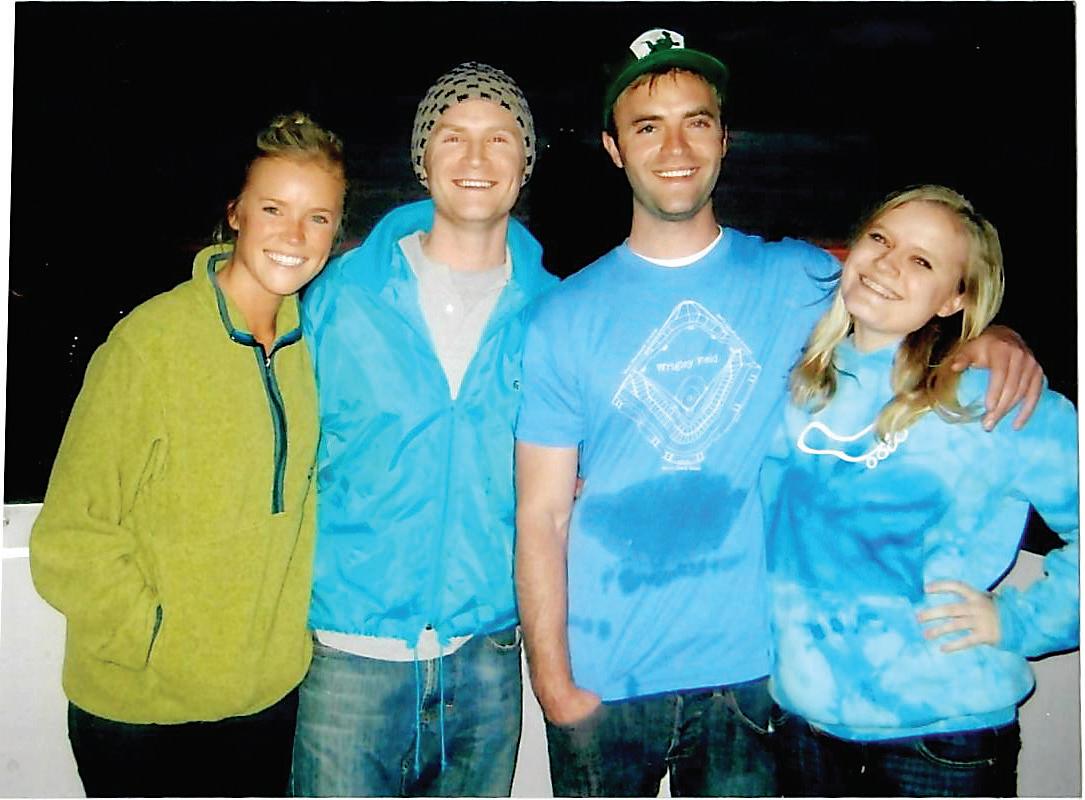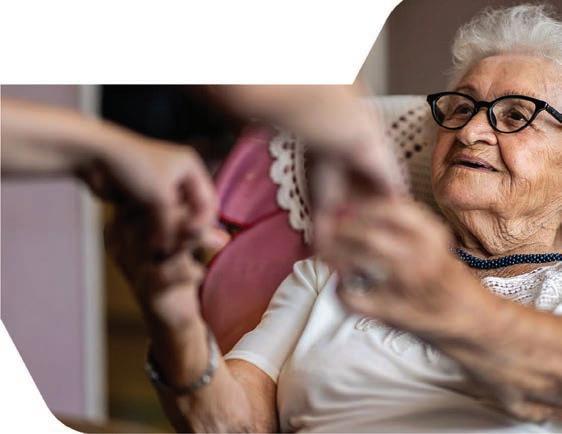
7 minute read
What the new Denver City Council looks like
Members will be will sworn in on July 17
BY REBECCA TAUBER DENVERITE
e 2023 election has come and gone. Denverites now have a sense of what the next four years will look like on Denver’s City Council. City Council will have seven returning councilmembers and welcome six newcomers. It will also have a record ve Latinas represented on Council, according to Council spokesperson Robert Austin.
e biggest news from June 6 came from the District 9 race, with Darrell Watson taking a large and early lead that incumbent Councilmember Candi CdeBaca just couldn’t make up as votes were counted through the night. District 9 was the most expensive and most watched council race.
During the election, an opposition that included developers and area business leaders developed to CdeBaca, who came to be known for her contrarian stances during her four years on Council. She often voted no and spoke out against developers.
SEE COUNCIL, e workshops promote healing through “ ower therapy,” Austin said.
Austin expanded her business in April 2022 when she opened a studio on South Broadway in Denver’s Platt Park neighborhood. Brooks Floral & Co. specializes in weddings and pop-up events, but it’s the intimate oral design workshops that gives Austin great pride.
She begins each workshop session with her story and the inspiration for Brooks Floral & Co. en she opens the oor to attendees who would like to share a story. Austin believes designing oral arrangements is like meditation because one has to become intentional and re ective. is type of environment has been successful in allowing people to open up, she said. e workshops close with a gift — writing a mantra on a card to set an intention and a reminder for people to see the beauty in themselves.
“In the beginning, there are nerves, fear and self doubt,” Austin said, but “those shift to a place of abundance and pride.”
She added that it’s important to talk about grief, even though it is hard.
“Avoiding it doesn’t make it go away,” Austin said. “Life goes on and we are still stuck with this void.” e workshops aren’t speci cally for individuals experiencing loss, but are intended to provide a safe space for healing. ey are designed for any skill level and participants don’t need to consider themselves creative or have any background in designing oral arrangements. Attendees learn oral design tips, tricks and techniques, but Austin does not use a model bouquet.

“ at would take away the beauty of personalization,” she said. “Each design ends up uniquely di erent.”
Centennial’s Caroline Neale attended her rst oral design workshop with Austin earlier this year, in part due to a New Year’s Resolution — to focus time on her passion of oral design. She said she was attracted to Austin’s workshop style and the workshop’s focus on the whole person.
“While I thought I would get instruction, I got so much more,” Neale said. “I found a safe space to explore and connect.”
Austin has only one rule for the workshops. It is to not judge yourself.
“We tend to be really harsh critics of ourselves, but owers don’t judge us,” Austin said. “ ey just ask that we take care of them and appreciate their beauty.”
Fond memories
Bob Christenson described his mother, Jean “Jeannie Bird” Christenson, as a “ ower nut,” and he believes Austin inherited her love of owers through her grandmother.
Austin has fond memories of playing with her siblings and cousins in their grandmother Jeannie Bird’s garden. It was like a maze, Austin said, and they would spend hours exploring it together.
Austin’s late brother, Brooks, loved nature, traveling and adventure, she said. After high school, he spent a year abroad on a Rotary Exchange Program in Romania. He earned a bachelor’s degree in international relations from the University of South Dakota in 2008, and a juris doctor from the university’s School of Law in 2012. In 2015, he graduated from the University of Denver’s Josef Korbel School of International Studies with a master’s degree in organizational management, global health, and political theory.
Among other professional accomplishments, Brooks served as a grant writer and advisor for nonpro ts and led e orts to combat global poverty.
He was a craft brewer and was working on collecting wild owers from each county in South Dakota to create di erent oral-inspired avors in his beer. He used cooking as a creative outlet and taught Austin, who moved to Colorado in 2014, how to cook.
Austin’s core memories of her brother are tied directly to the inspiration for her oral company. His adventurous spirit is re ected in her asymmetrical and whimsy oral designs.
“Whenever I feel imposter syndrome or feel like I’m not enough, I feel his presence guiding me, saying thank you for doing this,” Austin said. “‘You’ve got this.’”
Flourishing through floral design


During the initial period following Brooks Christenson’s death, the family home was ooded with oral arrangements and plants, transforming it into an indoor garden. ese owers brought comfort during a tragic time, and Austin realized she didn’t want the owers to go to waste.
“Once the owers were gone, it was like a piece of my brother (was, too), in a sense,” she said. “It is therapeutic to still feel connected.”
So, Austin did everything she could to keep the owers alive. She rearranged fresh bouquets to give them a longer lifespan, then dried and pressed the owers and sent them to Brooks’ friends and family who could not be present to honor her brother’s memory.
Prior to her brother’s death, Austin was a wedding planner. But owers are her true passion, she said. Floral arranging as a creative outlet has helped her process grief and stay connected to her brother’s memory. She wanted to share this with others.
“By combining my creativity, passion and love for owers with education, I’m able to create a community that allows connectedness, kindness, compassion, acceptance and self-love to ourish through oral design,” Austin said.
She knows this mission is something her brother would be proud of.
“Flowers can teach us so much about ourselves,” Austin said. “Flowers are nite and there is something really special about caring for and designing orals. Experiencing their beauty allows us to really live and re ect in the moment while asking for nothing in return.”





Some of those interests backed Watson, who got campaign support from people including Dick Monfort, owner of the Rockies, and Westside Investment Partners, the owner of Park Hill Golf Course.
In District 10, incumbent Councilmember Chris Hinds won reelection over Shannon Ho man, who ran in coalition with CdeBaca and District 8 candidate Shontel Lewis. District 8 was by far the closest council runo race. After the votes were counted, Lewis secured a 356-vote win over Brad Revare for the open council seat.
While Districts 8 and 10 did not see quite as much money as District 9, both Hinds and Revare far outraised Ho man and Lewis. And in all three races, outside groups spent much more money in opposition to CdeBaca, Lewis and Ho man than against Watson, Revare and Hinds.
Here’s a rundown of the incoming City Council Members will be will sworn in on July 17.
City Council at-large: Serena Gonzales-Gutierrez and Sarah Parady
District 1: Amanda Sandoval (incumbent)
District 2: Kevin Flynn (incumbent)
District 3: Jamie Torres (incumbent)
District 4: Diana Romero Campbell
District 5: Amanda Sawyer (incumbent)
District 6: Paul Kashmann (incumbent)
District 7: Flor Alvidrez
District 8: Shontel Lewis
District 9: Darrell Watson
District 10: Chris Hinds (incumbent)
District 11: Stacie Gilmore (incumbent)
Leaving Council are at-large Councilmembers Debbie Ortega and Robin Kniech; District 4 Councilmember Kendra Black, District 7 Councilmember Jolon Clark, District 8 Councilmember Christopher Herndon and District 9 Councilmember CdeBaca. Most notably, Ortega is leaving after serving on Council for almost 28 years, and Kniech is leaving after 12 years.
While most of the Democratic Socialists-backed candidates did not win their races, the results do not necessarily mean Council will lack progressive voices.
CdeBaca, Ho man and Lewis ran as part of a slate a liated with Democratic Socialists of America (DSA) along with Parady, who won a Council at-large seat in April. Other DSA candidates who failed to make the runo included third-place mayoral candidate Lisa Calderón and Council candidates at voters in certain districts rejected most of the socialist-backed candidates, who pushed ideas like social housing and diverting police funds for other city services, presents a mixed bag of results for the city’s DSA movement.
Tony Pigford (District 4) and Ti any Caudill (District 2).
CdeBaca said in a statement Wednesday that, though she lost her bid for another term, “the goal in this election was to bring more progressive candidates to the table,” referring to Parady and Lewis’ wins.
Some voters and political organizers may see those losses as a lack of progressivism on City Council. But Councilmember Kniech points to policies the governing body has unanimously passed in recent years — including worker protections and raising Denver’s minimum wage — as proof that Council is willing to make change happen. Kniech also pointed to decisions from Denver voters, like the variety of taxes Denver voters have levied on themselves to raise money for things like climate protection, homelessness and education.
“Did voters reject progressivism? I don’t think so,” said outgoing Councilmember Kniech. “ e City Council of Denver will remain pretty darn progressive regardless of these outcomes. ey may have rejected the furthest left brand name.” is story is from Denverite, a nonpro t Denver news source afliated with CPR News. Used by permission. For more, and to support Denverite, visit denverite.com.
Of course, bills passed by Council will ultimately require mayor-elect Mike Johnston’s signature. The question remains: how will Council work (or not work) with him?
Denver has a strong mayor system, so newly elected Johnston will set the budget and sign o on any bills passed through Council. But Denver’s Councilmembers have sway over city zoning, approval of mayoral appointments and the ability to pass budget amendments.
And while the mayor signs nal legislation, Councilmembers have taken the lead on major city bills in recent years, like raising the minimum wage and decriminalizing jaywalking. Council pushed outgoing Mayor Michael Hancock on certain positions-just Monday, Council voted to make Safe Outdoor Sites permanent, a city sanctioned camping program Hancock opposed until agreeing to a pilot in 2020.
For the rst time in 12 years, Denver has a new mayor, so the dynamics are likely shifting. ough we know the city’s mayoral and Council lineup for the next four years, we won’t know for a few months how the two groups will — or will not — work well together.










